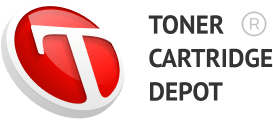What kind of printer to select for you office depends of how big that office is and here is why. The size of the office demands same volumes of printing: two-person business hardly prints 500 pages a month, while a corporation that occupies a whole building may produce thousands pages a week.
So, the first question you must answer yourself is how much you are going to print. Another important factor of selecting a printer is what kind of output you will produce: text, graphics, photos or a mixture of them, in other words, do you need to paint a picture or to create the thousand words that describe it?
Keeping these 2 things in mind, you have two major options: inkjet printer or laser printer.
Inkjets Can Print Less, Lasers More
Do you print a lot, or does your office have a lot of people printing? Laser printers with their faster engines, higher-capacity paper trays, and higher monthly duty cycles can pump out longer documents and handle a steady pile of printouts. (Networking is a given for multiperson offices; you’ll find plenty of inkjets and lasers that offer Ethernet, Wi-Fi, or both.) Printers that have automatic duplexing can save paper. If you don’t print that much – a few dozen pages a day, nothing too complicated – an inkjet or low-capacity laser might work just fine.
A small office manager should keep to 2 rules of thumb:
- your input tray should exceed your daily print volume
- your ink or toner cartridge’s page yield should exceed your monthly print volume
There is a middle ground. A one-person office might not need networking. A lower-volume office that prints less than 100 pages per day could be happy with an inkjet printer. Some office-oriented inkjets offer faster speed, bigger paper trays, and better plain-paper print quality, rivaling the capabilities of lower-end lasers.
Inkjets Are Good at Graphics, Lasers at Text
An inkjet printer excels at painting a picture. Though inkjets have greatly improved in speed and text quality in recent years, their strong side is graphics quality. Inkjets can achieve a wider range of colors and produce smoother-looking images than all but the most sophisticated (and astronomically priced) color laser printers. Some can print well even on everyday stock.
A thousand words will look better coming from a laser. Lasers set the gold standard for printing precise text and if that’s all you do, a simple monochrome laser could fit nicely. Color lasers or solid-ink color printers, such as those from Xerox can handle simple graphics such as pie charts and logos, and they can print decent photos, too.
Maybe a Multifunction?
Multifunction devices are also printers that have copy, scan, and sometimes fax function combined in one device. These printers are becoming more popular with offices that need to do a lot in a limited amount of space. It costs money to stuff all those features into one box, though; and as a result, a $700 MFP will have a less robust printer at its heart than a like-priced stand-alone printer. Some say that adding other capabilities may compromise on the primary machine, but don’t be afraid. The technology most MFP are good enought to provide high quality of printing.
While you might be tempted to buy a machine with fax functions “just in case,” think tiwce about how often you’ll use it (as opposed to scanning to e-mail, which is faster and easier). An MFP with no faxing capability will cost less. Onthe other hand, the multifunction overload is possible. If your office prints, faxes, or copies in high volume, an MFP may require you to wait to copy while someone else’s big print job finishes.
The Cost of Ownership
Because both inkjets and lasers can print a wide variety of documents, the final decision often boils down to cost. Inkjets tend to be cheaper to buy but more expensive to maintain over time. Laser and solid-ink printers cost more up-front, but they usually save you money on running costs. Here is another couple of things you should consider.
- Cost per page.Divide the price of an ink or toner cartridge by its page yield – usually available (with some digging) from the vendor’s Web site – to get a sample cost per page, not counting paper. For instance, a page of black text from a laser printer might cost one to three cents; the same page from an inkjet might cost three to five cents. Those pennies can add up quickly, especially when you use more ink for longer or more graphics-heavy documents.The smaller the cartridge’s page yield, the more pricy the ink or toner will be. Some ink tanks are empty after just a few hundred pages. The smallest toner cartridges (around 1000 pages) will cost more per page than a toner supply that can print 2500 or more pages.
- Other consumables. Lasers have their pricey side, too. Their toner cartridges cost a lot more up-front, especially if they contain a drum and other printer parts in addition to the toner. Other parts, such as the fuser, may cost hundreds of dollars to replace, though they may require replacing only once in the lifetime of the printer.
